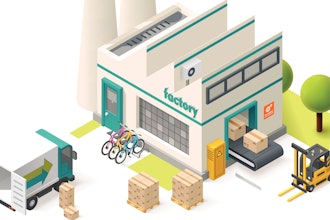HONOLULU (AP) -- A technology used to track everything from cattle and bottles of Viagra to U.S. military weapons will soon be tested on an unlikely candidate for surveillance: tomatoes.
The Hawaii Department of Agriculture will rollout a three-year pilot project this month to track and trace tomatoes and other produce using radio frequency identification (RFID) technology. The system uses microchips with paper-thin antennae stuck onto produce boxes that emit radio waves when scanned.
While the technology is already being used by a few supermarkets and farms across the nation, Hawaii would be the first state to test RFID from farm to market in hopes of improving food safety.
Sandra Lee Kunimoto, chairwoman of the Hawaii Board of Agriculture, said the ability to determine where food comes from and where it has been distributed will become even more important as the food supply continues to be globalized.
In the event of a recall, the state wants to be able to trace a product to the farm of origin and identify where inventories were sent, all within a few minutes.
The state said the system will help improve quality and freshness as well as create a database of all produce being shipped and sold.
Four farms across Hawaii -- from a small farm on the Big Island to a 2,000-acre (800-hectare) multi-crop operation on Oahu -- will soon tag boxes and pallets of everything from lettuce to strawberries.
John Ryan, administrator for the program at the state Agriculture Department, said he hopes that costs will eventually come down to a point where RFID would be adopted by many of the 5,000 farms in Hawaii, and beyond.
''Our goal here really is to develop a model that hopefully many other states can use,'' he said.
Ryan said fruits and vegetables could one day be tagged with tiny RFID labels with ID numbers that would allow consumers to access information through the state's online database.
The state is partnering with Motorola Inc., Lowry Computer Products Inc. and GlobeRanger Inc. The state is also working with the University of Hawaii to develop bio-sensors that could test for contaminants, such as E. coli and salmonella.
Joe White, a vice president in Motorola's RFID division in Maryland, said there was growing interest worldwide, especially from Europe and Asia, in tracking produce.
The technology dates to World War II, when Britain put transponders in Allied aircraft to help radar crews distinguish them from German fighters. In 2003, the U.S. Department of Defense and Wal-Mart mandated that suppliers radio tag all crates and cartons, giving RFID a major boost.
Katherine Albrecht, co-author of ''Spychips'' and founder of CASPIAN, an anti-RFID group, said she's not against using RFID to track produce in bulk. However, the possibility of tagging individual fruits and vegetables raises serious consumer privacy issues.
''It's crossing the line in the sand. Once you begin seeing them appear on individual consumer items, you open up a whole Pandora's Box to track individuals,'' she said.
The state says it's all an effort to improve food safety standards, not to track people or eating habits.
In March 2007, eight people in Hawaii were sickened with E. coli after consuming contaminated lettuce. It took months for health officials to pinpoint the source, a Kauai farm that had been flooded by stormwater runoff from a nearby cattle pasture.
An E. coli outbreak in 2006 killed three people and sickened hundreds nationwide before the bacteria was traced back to contaminated spinach from Central California.
In its trial, the state is supplying the RFID labels, which currently cost about 17 cents (11 euro cents) apiece and handheld readers that run nearly $3,000 (euro1,900) each.
Ryan predicts the cost of the passive tags eventually will drop to a few pennies.






















